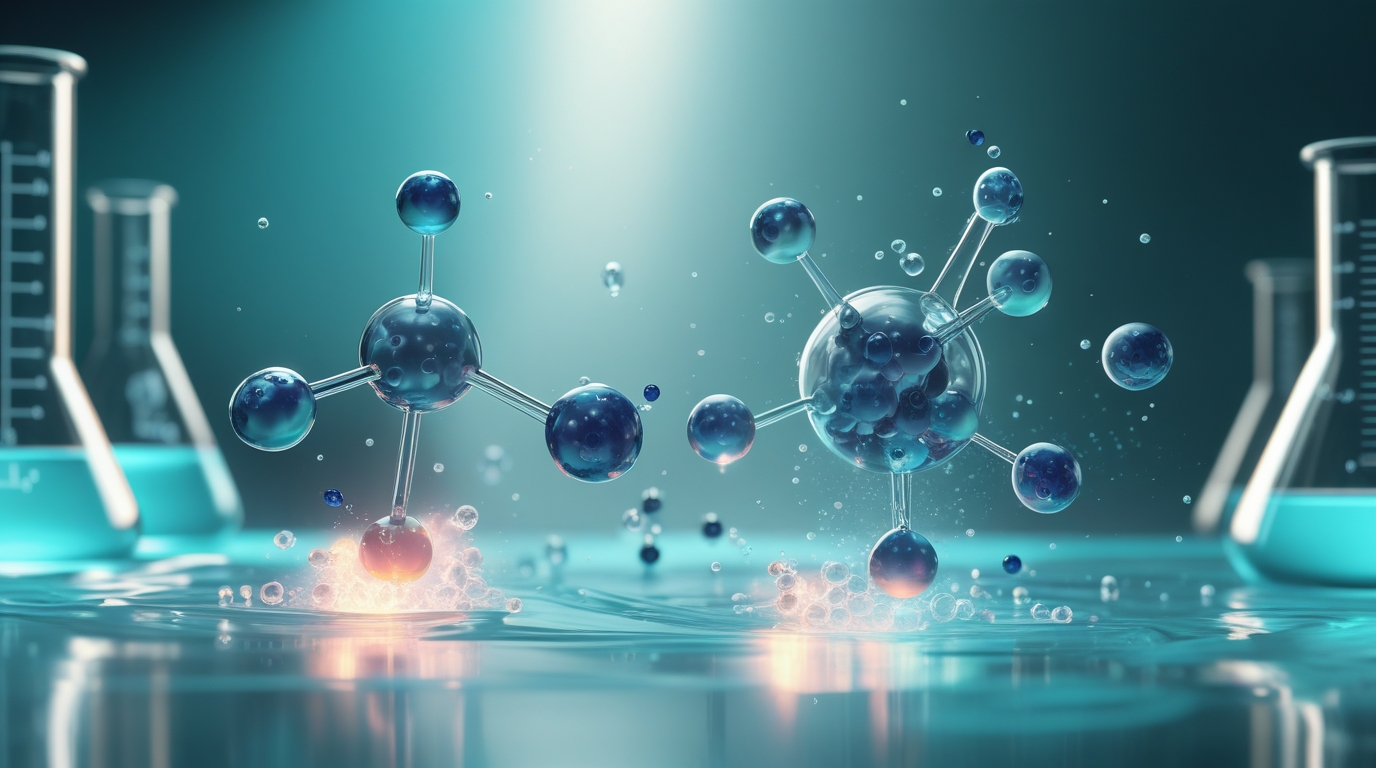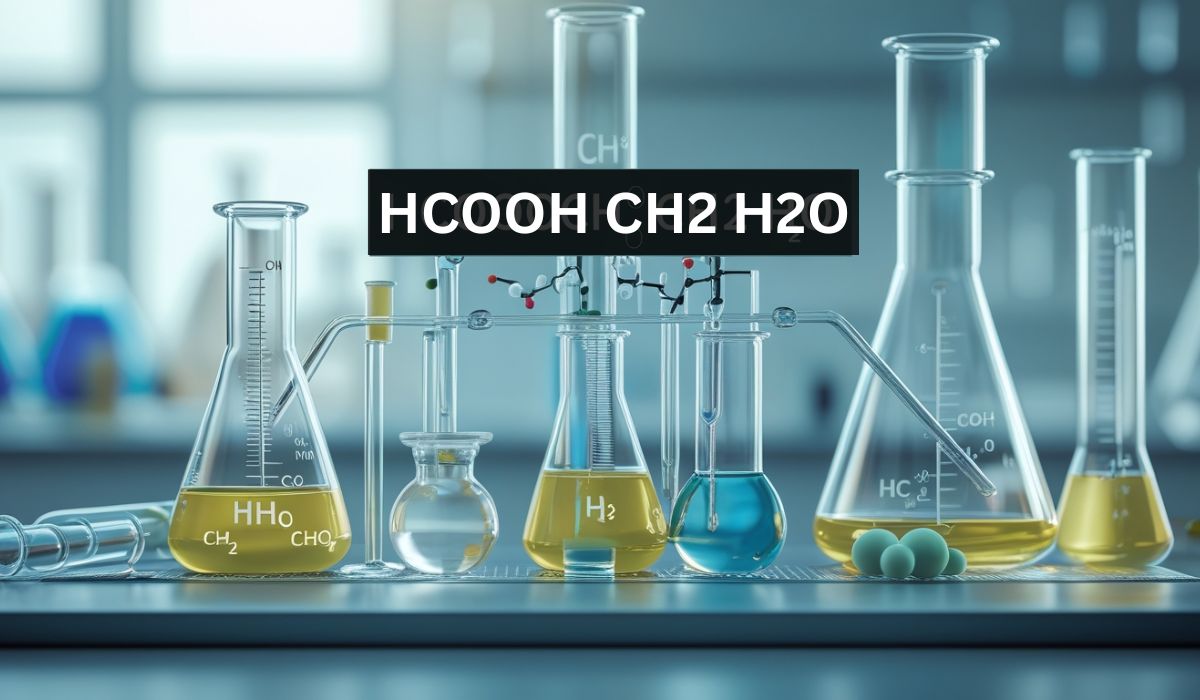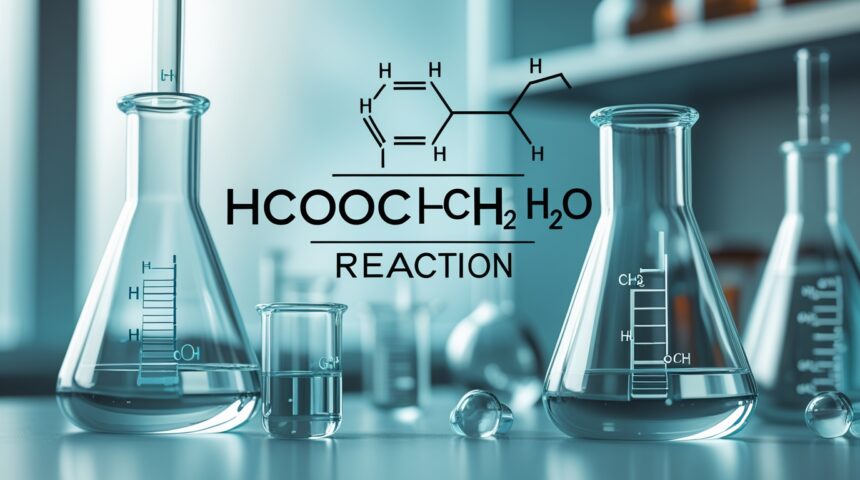In the fascinating field of organic chemistry, reactions between small molecules often reveal the foundations of complex industrial and biological processes. One such reaction involves HCOOCH CH₂ H₂O, a shorthand for a system that includes an ester compound (methyl formate or a related structure), a methylene group (CH₂), and water (H₂O). Together, these components demonstrate how simple molecules undergo transformation through hydrolysis, a reaction central to both laboratory chemistry and large-scale manufacturing. Understanding the HCOOCH CH₂ H₂O reaction helps chemists decode how esters break down into their acid and alcohol counterparts, offering insights into energy production, fuel synthesis, and material design.
Understanding the Components of HCOOCH CH₂ H₂O
Before exploring the mechanism, it’s essential to break down each element in this chemical system.
-
HCOOCH typically refers to a formate ester, most commonly methyl formate (HCOOCH₃). This compound features an ester linkage, where a carbonyl carbon is bonded to an oxygen that connects to a methyl group.
-
CH₂ represents the methylene group, a two-hydrogen, one-carbon bridge that appears in countless organic molecules and intermediates.
-
H₂O, or water, is more than a solvent—it plays a direct reactive role in hydrolysis, helping to cleave chemical bonds by introducing oxygen and hydrogen atoms.
When combined, these molecules form a reactive environment where ester bonds are susceptible to attack by water, leading to the formation of formic acid (HCOOH) and methanol (CH₃OH). This process demonstrates a textbook example of nucleophilic acyl substitution, one of the most important mechanisms in organic and biological chemistry.
The Science Behind Ester Hydrolysis

The HCOOCH CH₂ H₂O reaction exemplifies ester hydrolysis—an essential transformation in which water splits an ester into its acid and alcohol forms. In this reaction, the carbonyl carbon in the ester acts as an electrophilic site, meaning it is attracted to nucleophiles such as the oxygen atom in water. The outcome is the cleavage of the ester bond and the formation of new oxygen–hydrogen and carbon–oxygen bonds.
This reaction is not only an academic example but also a process observed in soap making (saponification), biochemical digestion, and polymer degradation. The controlled breakdown of esters through water is a cornerstone of green chemistry, emphasizing low-waste and environmentally friendly approaches to chemical synthesis.
Step-by-Step Mechanism of the HCOOCH CH₂ H₂O Reaction
1. Nucleophilic Attack
The mechanism begins when a molecule of water attacks the carbonyl carbon of the ester. This step forms a tetrahedral intermediate, a temporary structure in which the central carbon is bonded to four different groups—oxygen, hydroxyl, alkoxy, and hydrogen.
2. Intermediate Rearrangement
Next, the intermediate rearranges, transferring a proton (H⁺) within the molecule. The bond between the carbon and the alkoxy group (–OCH₃) weakens as the carbon–oxygen double bond reforms.
3. Bond Cleavage
The –OCH₃ group departs as methanol (CH₃OH), leaving behind a molecule of formic acid (HCOOH). The overall balanced reaction can be represented as:
HCOOCH3+H2O→HCOOH+CH3OHHCOOCH_3 + H_2O → HCOOH + CH_3OH
This simple yet elegant transformation reveals how a small ester like methyl formate is converted into two useful organic compounds through water’s nucleophilic properties.
Catalysts and Reaction Conditions
While ester hydrolysis can occur under neutral conditions, it proceeds much faster when catalyzed by acids or bases.
-
Acid-Catalyzed Hydrolysis:
In acidic environments, a proton (H⁺) from the acid activates the carbonyl oxygen, making the carbon more electrophilic and thus more prone to attack by water. Common catalysts include sulfuric acid or hydrochloric acid. -
Base-Catalyzed Hydrolysis (Saponification):
Under basic conditions, hydroxide ions (OH⁻) directly attack the carbonyl carbon. The products in this case are the salt of formic acid (sodium formate if NaOH is used) and methanol.
Temperature also affects the reaction rate. Heating the mixture accelerates hydrolysis, but excessive temperatures may cause decomposition or side reactions. In industrial contexts, optimizing temperature and pH ensures maximum yield with minimal energy consumption.
Industrial Importance of the HCOOCH CH₂ H₂O Reaction

The hydrolysis of methyl formate—represented by HCOOCH CH₂ H₂O—is not just a classroom example; it has practical applications across several industries.
-
Formic Acid Production: Formic acid, one of the reaction’s main products, serves as a preservative, disinfectant, and reducing agent. It’s widely used in textile dyeing, leather tanning, and livestock feed preservation.
-
Methanol Generation: Methanol is a crucial raw material in the production of formaldehyde, plastics, and biofuels. Its renewable production through controlled hydrolysis supports sustainable industrial chemistry.
-
Fuel and Energy Applications: The system is also relevant in hydrogen fuel cells, where formic acid acts as a hydrogen carrier. Understanding how it forms and decomposes helps design efficient catalytic systems for clean energy.
Environmental and Safety Considerations
Formic acid and methanol are both valuable but potentially hazardous substances. Formic acid is corrosive and can cause skin burns or eye irritation. Methanol, though a common solvent and fuel, is toxic if ingested or inhaled. Therefore, laboratories and factories handling HCOOCH CH₂ H₂O systems must follow safety protocols such as:
-
Using fume hoods and protective equipment.
-
Employing proper waste disposal and spill neutralization methods.
-
Monitoring ventilation and air quality to minimize vapor accumulation.
From an environmental standpoint, hydrolysis reactions are generally considered eco-friendly because water serves as both a reagent and a solvent, reducing reliance on harmful organic solvents.
Analytical and Research Applications
Chemists often analyze the HCOOCH CH₂ H₂O reaction to study reaction kinetics and molecular behavior. Techniques such as infrared (IR) spectroscopy, gas chromatography (GC), and nuclear magnetic resonance (NMR) spectroscopy allow researchers to monitor product formation and confirm molecular structures.
These analyses help determine reaction rates, activation energies, and equilibrium constants. In academic settings, this reaction is frequently used in organic chemistry labs to teach fundamental principles like equilibrium shifts, acid-base catalysis, and molecular resonance.
Biochemical and Environmental Parallels
Interestingly, reactions similar to HCOOCH CH₂ H₂O hydrolysis also occur in living organisms. Enzymes such as esterases and lipases catalyze the breakdown of esters in biological systems, mirroring the acid- or base-catalyzed pathways seen in laboratories.
In nature, hydrolysis plays a role in the degradation of organic matter and pollutants. For instance, certain microorganisms use similar chemical pathways to decompose esters and other oxygenated organic compounds, contributing to bioremediation and carbon cycling.
Modern Innovations and Future Outlook
Recent research continues to explore new ways to utilize and optimize the HCOOCH CH₂ H₂O reaction for sustainable applications.
-
Catalytic advancements: Scientists are developing solid acid catalysts that promote hydrolysis without generating liquid waste.
-
Bio-based feedstocks: Formic acid and methanol can be derived from renewable biomass instead of fossil fuels, creating a circular chemical economy.
-
Green process design: Integrating hydrolysis reactions into closed-loop systems minimizes emissions and energy consumption, aligning with modern environmental standards.
As global industries move toward green chemistry principles, understanding simple reactions like this one becomes increasingly valuable for innovation and sustainability.
Common Challenges in the Reaction Process
While straightforward in concept, ester hydrolysis can face several obstacles in real-world conditions:
-
Incomplete conversion due to insufficient catalyst or poor mixing.
-
Side reactions, especially under high temperatures, which can produce carbon monoxide or other byproducts.
-
Product separation difficulties, since formic acid and methanol form azeotropes that complicate purification.
Chemical engineers address these challenges by adjusting temperature, catalyst concentration, and solvent ratios to achieve the highest yield and purity.
Educational Relevance
The HCOOCH CH₂ H₂O reaction holds immense educational value for students studying chemistry, biochemistry, or chemical engineering. It offers a hands-on demonstration of how molecular structure influences reactivity, how catalysts affect rate, and how equilibrium can shift depending on environmental conditions.
By mastering this single reaction, students gain a deeper appreciation of how simple organic transformations underpin larger chemical systems, from pharmaceuticals to energy technologies.
Final Thoughts
The HCOOCH CH₂ H₂O reaction—essentially the hydrolysis of methyl formate—embodies the elegance of organic chemistry. Through a simple interaction between an ester and water, this process transforms common compounds into versatile industrial products like formic acid and methanol. Beyond the lab, it supports sustainable fuel research, eco-friendly manufacturing, and green chemistry education.
Understanding the detailed mechanism, environmental implications, and modern innovations of this reaction provides not only scientific knowledge but also a glimpse into chemistry’s role in shaping a cleaner, more efficient future.
Frequently Asked Questions (FAQs)
1. What does HCOOCH CH₂ H₂O represent in chemistry?
It represents a chemical system where an ester (such as methyl formate, HCOOCH₃) reacts with water (H₂O). This formula is shorthand for studying the hydrolysis reaction that produces formic acid (HCOOH) and methanol (CH₃OH).
2. What is the main purpose of the HCOOCH CH₂ H₂O reaction?
Its main purpose is to demonstrate ester hydrolysis, a reaction that converts esters into their acid and alcohol products. This process is fundamental in both industrial synthesis and organic chemistry education.
3. How does temperature affect the hydrolysis of methyl formate?
Higher temperatures generally speed up the reaction by increasing molecular motion and collision frequency. However, excessively high temperatures can cause side reactions or decomposition, so moderate heating under controlled conditions is ideal.
4. Why is the HCOOCH CH₂ H₂O system considered environmentally friendly?
Because water acts as both solvent and reactant, this system avoids hazardous organic solvents and produces minimal waste. The products—formic acid and methanol—are biodegradable and can be used in sustainable energy applications.
5. What safety precautions should be taken during this reaction?
Always handle formic acid and methanol in well-ventilated areas with gloves, goggles, and protective clothing. Avoid open flames, as methanol is flammable, and neutralize acid spills using weak bases like sodium bicarbonate.
FOR MORE : FLIPPAMAGAZINE












